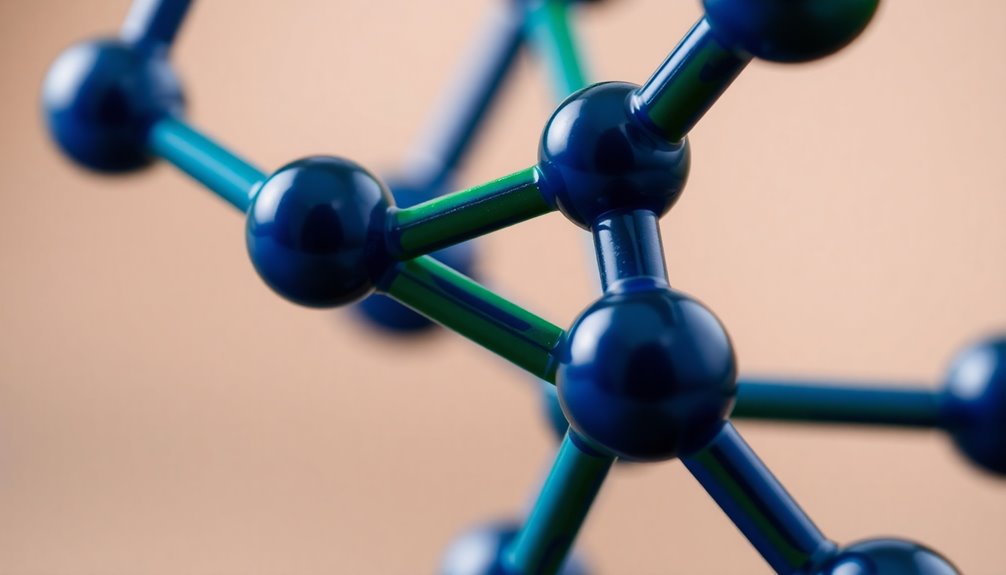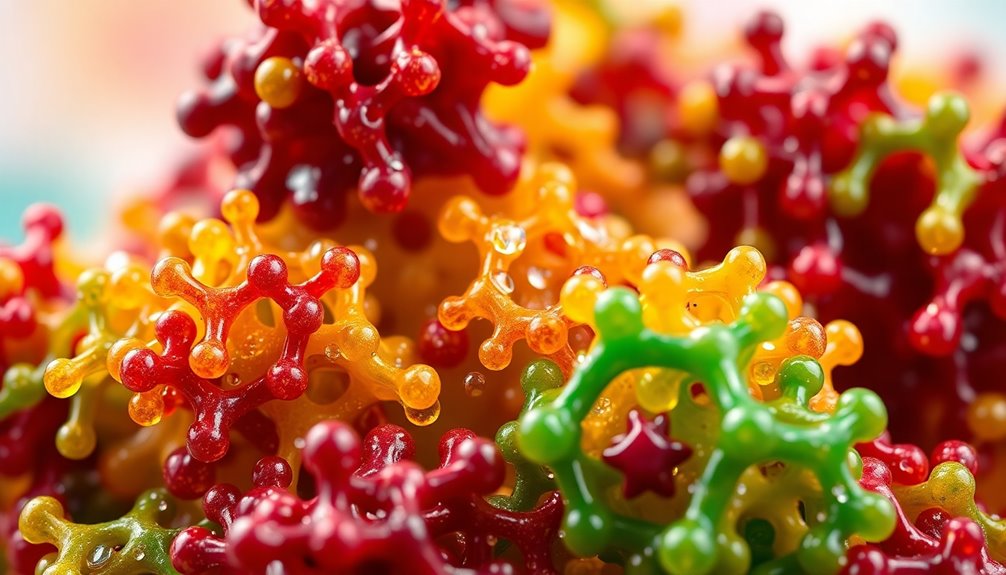Aromatic amino acids, like tryptophan, tyrosine, and phenylalanine, absorb UV light because of their unique structures and specific electronic changes. You'll find that tryptophan has the strongest absorbance at 280 nm, while tyrosine absorbs around 275 nm. These amino acids possess conjugated π electron systems, which are essential to this absorbance. Factors such as solvent polarity and pH can influence their UV absorbance characteristics. This property is significant in protein analysis, helping you estimate concentrations accurately. If you're curious about other factors affecting their absorbance or their applications in science, there's more to explore.
Key Takeaways
- Aromatic amino acids have unique structures that enable them to absorb specific UV wavelengths due to their conjugated π electron systems.
- Tryptophan exhibits the strongest UV absorbance at 280 nm, while tyrosine absorbs at 275 nm and phenylalanine at 257 nm.
- The absorbance occurs through electronic transitions, such as π to π* and n to π* for tryptophan and tyrosine.
- Environmental factors like solvent polarity, pH, and ionic strength can influence the UV absorbance characteristics of these amino acids.
- UV absorbance properties are essential for quantifying protein concentrations and assessing purity in biochemical assays.
Aromatic Amino Acids Overview
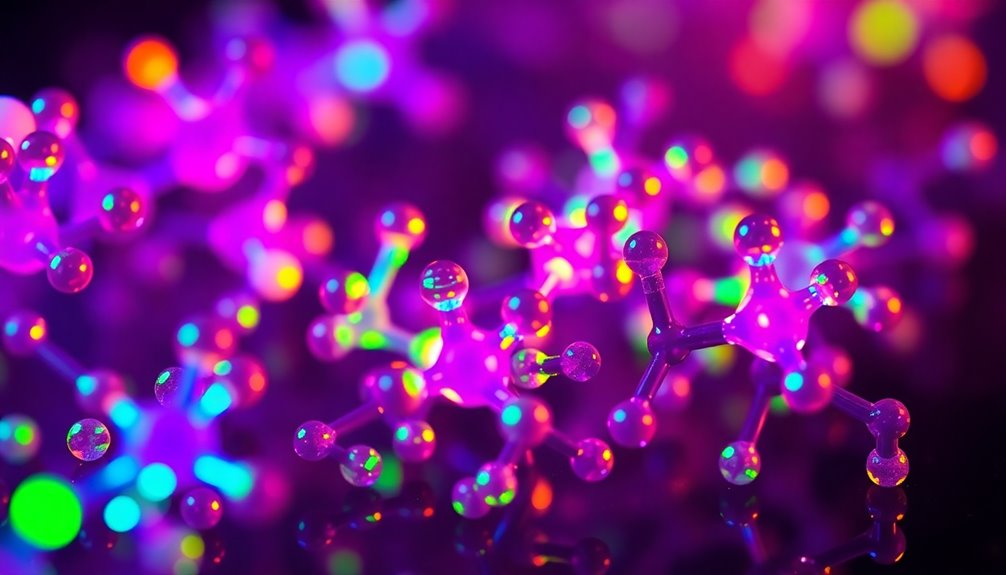
Aromatic amino acids play a essential role in biochemistry due to their unique structures and properties.
You'll find that tryptophan, tyrosine, and phenylalanine are the three main aromatic amino acids, each exhibiting distinct absorbance characteristics when exposed to UV light.
Tryptophan stands out with the strongest UV absorbance around 280 nm, thanks to its indole side chain, making it fundamental for protein concentration assessments.
Tyrosine absorbs UV light effectively but with lower intensity, while phenylalanine shows the least absorbance.
Their conjugated π systems allow for significant electronic alterations, making these amino acids serve as chromophores in proteins.
This functionality is imperative for estimating protein concentrations through UV-visible spectroscopy in various biochemical analyses.
Mechanism of UV Absorption
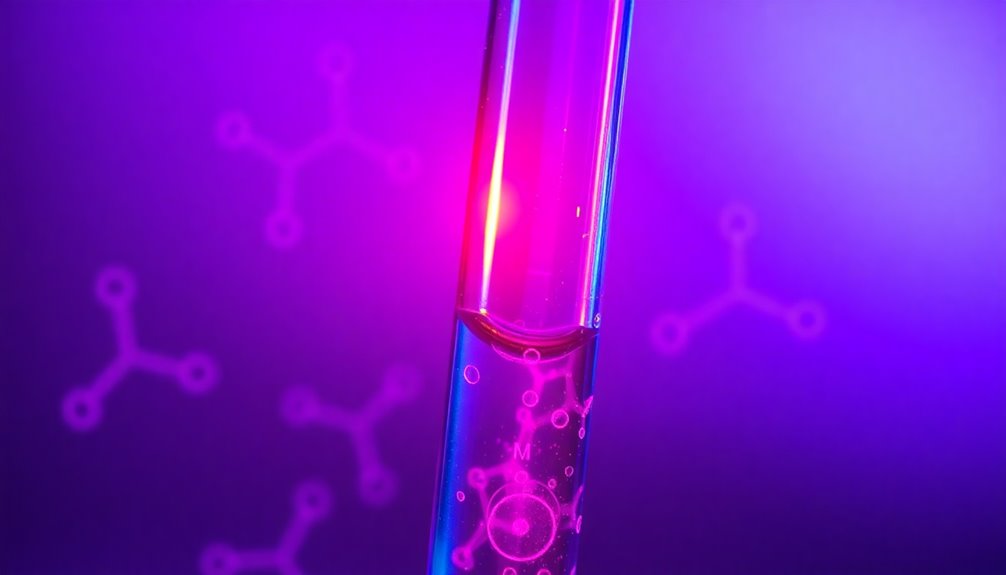
When proteins encounter UV light, the unique structure of their aromatic amino acids enables them to absorb specific wavelengths effectively. Tryptophan, tyrosine, and phenylalanine contain aromatic rings that facilitate electronic shifts, particularly π to π* and n to π*. Tryptophan stands out with an absorbance peak around 280 nm, primarily due to its indole side chain, while tyrosine absorbs similarly but with less intensity. This absorbance is essential for estimating protein concentration.
| Amino Acid | Absorbance Peak (nm) | Shift Type |
|---|---|---|
| Tryptophan | 280 | π to π*, n to π* |
| Tyrosine | 275 | π to π* |
| Phenylalanine | 257 | π to π* |
Tryptophan and Tyrosine Properties

Tryptophan and tyrosine play essential roles in protein structure and function, primarily due to their unique properties as aromatic amino acids. Their ability to absorb UV light is key in biochemical assays for estimating protein concentrations.
Here are some key points about their properties:
- Absorbance Peaks: Tryptophan has an absorbance peak around 280 nm, making it the strongest UV absorber among amino acids.
- Structural Differences: Tyrosine, with its phenolic hydroxyl group, shows significant absorbance at 275 nm but is less potent than tryptophan.
- π Electron Systems: Both amino acids possess conjugated π electron systems, facilitating electronic changes responsible for their UV absorbance. Additionally, certain aromatherapy techniques can utilize the interaction of essential oils with proteins in various applications.
These characteristics make tryptophan and tyrosine essential for understanding protein interactions and concentrations. Additionally, essential oils can also interact with proteins, influencing their structure and function in various applications.
Factors Influencing Absorbance
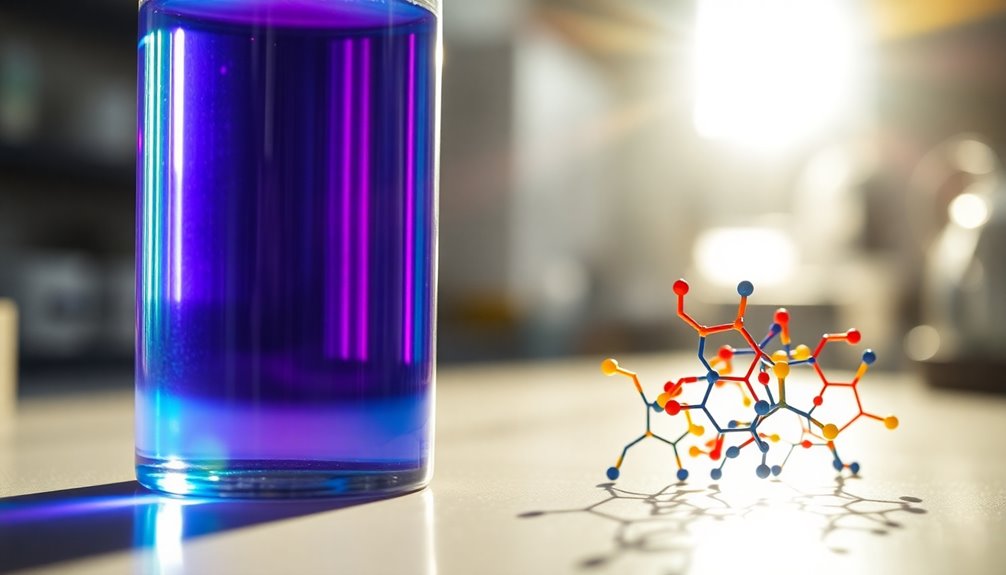
Factors like solvent polarity, pH, and ionic strength greatly influence the UV absorbance of aromatic amino acids. Tryptophan and tyrosine, key aromatic residues, absorb UV light due to their unique structures. Tryptophan absorbs most strongly at around 280 nm, thanks to its indole side chain, while tyrosine's absorbance is slightly lower.
The local environment affects their absorption spectrum; for instance, changes in solvent polarity can shift absorption maxima. Additionally, pH and ionic strength impact the ionization state of tyrosine, altering its absorbance characteristics.
Nearby amino acids may also induce energy transfer phenomena, such as quenching, where tryptophan absorb may be diminished by tyrosine fluorescence. Understanding these factors is essential for analyzing protein behavior and interactions.
Applications in Protein Analysis
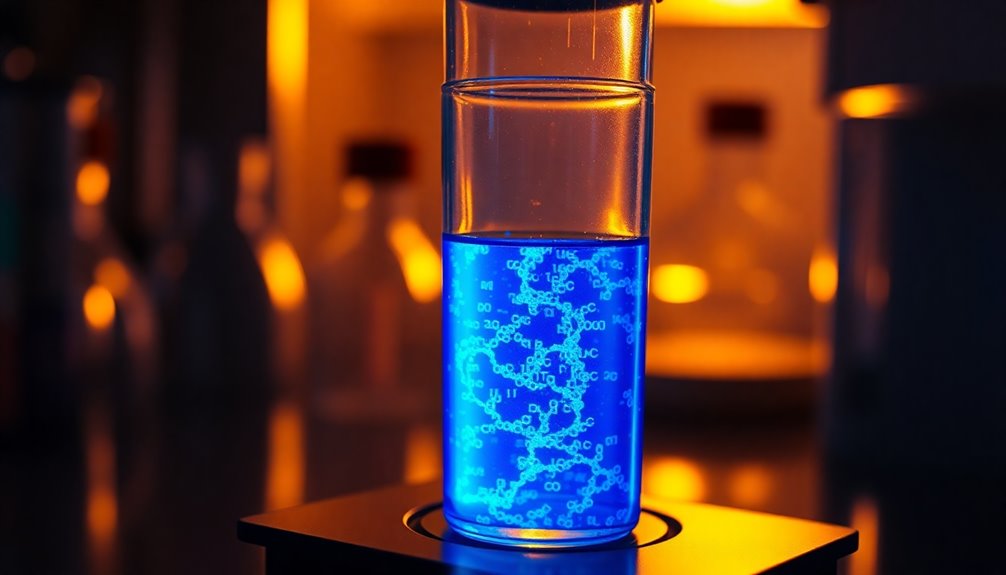
The influence of UV absorbance properties of aromatic amino acids plays a notable role in protein analysis. These amino acids, particularly tryptophan, tyrosine, and phenylalanine, absorb UV light around 280 nm, making them essential for estimating protein concentration.
Here are three key applications of this phenomenon:
- Quantifying Protein Levels: UV-visible spectroscopy allows for rapid, non-destructive analysis of protein concentrations in solutions.
- Enhancing Accuracy: Tryptophan's presence notably boosts UV absorbance, leading to more precise concentration determinations, especially in mixed proteins.
- Interpreting Purity: Understanding UV absorbance characteristics helps differentiate between proteins and potential interferents like nucleic acids, ensuring accurate estimations of protein purity and concentration.
Frequently Asked Questions
How Do Aromatic Amino Acids Absorb UV Light?
Aromatic amino acids absorb UV light due to their unique structures, specifically their conjugated π electron systems.
When you expose these amino acids to UV light, the electrons in their aromatic rings can jump to higher energy levels, resulting in electronic shifts.
Tryptophan, tyrosine, and phenylalanine each have distinct absorbance peaks, with tryptophan being the strongest.
Factors like pH and temperature can also affect how well these amino acids absorb UV light.
Why Do Aromatic Compounds Absorb UV Light?
Aromatic compounds absorb UV light like a sponge soaking up water! This happens because they've conjugated π systems that allow electrons to jump between energy levels.
The delocalized electrons in their rings lower the energy gap between molecular orbitals, enabling them to absorb light at longer wavelengths.
The unique structures of these compounds, with their double bonds and lone pairs, enhance their UV absorption, making them fascinating players in the world of chemistry.
Why Do Aromatic Amino Acids Fluoresce?
Aromatic amino acids fluoresce because they can absorb UV light and then emit it at longer wavelengths.
When you excite their unique electronic structures, π to π* shifts occur, leading to fluorescence.
Tryptophan's higher quantum yield makes it more fluorescent than tyrosine, and the surrounding environment can influence this property.
If you have both amino acids in a protein, tryptophan can quench tyrosine's fluorescence, altering the overall output.
Why Does Benzene Absorb UV Light?
Benzene absorbs UV light because of its conjugated π-electron system. When you expose benzene to UV radiation, the electrons undergo shifts between energy levels.
The stable aromatic ring structure lowers the energy gap between the ground and excited states, which makes absorption easier.
You'll notice that benzene has a maximum absorption wavelength around 254 nm, a characteristic feature of aromatic compounds, and this property is essential for various analytical applications.
Conclusion
In summary, aromatic amino acids like tryptophan and tyrosine absorb UV light due to their unique structures and electron-rich side chains. This property not only helps us understand protein behavior but also plays an essential role in various scientific applications. Isn't it fascinating how such small molecules can provide insight into larger biological processes? By recognizing the significance of UV absorbance, you can enhance your understanding of protein analysis and its implications in research and biotechnology.


